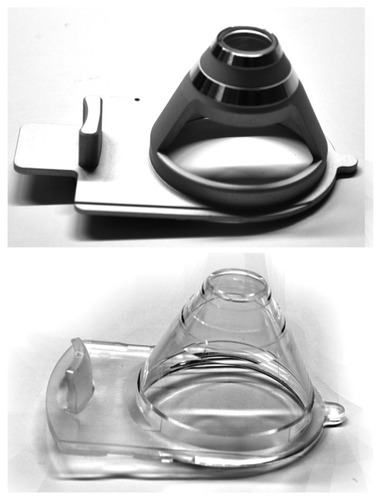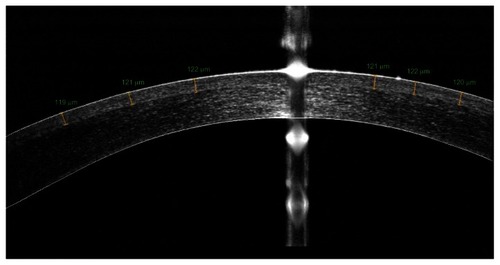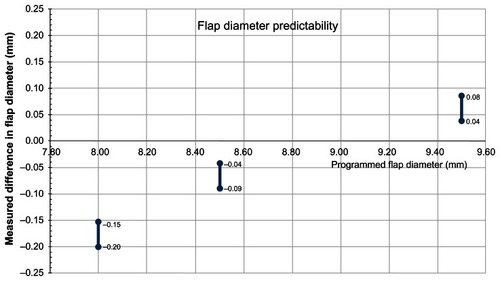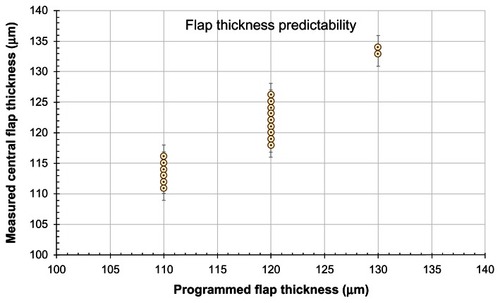Figures & data
Figure 1 The Alcon/WaveLight® FS200 patient interfaces 1504 (metal and glass, top) and 1505 (clear cone, bottom).

Table 1 Intended diameters of the flaps studied comparing the two groups
Figure 2 Measurement of flap thickness from the high-resolution meridional scan provided by the anterior-segment optical coherence tomography system.

Figure 3 Flap diameter predictability using the clear cone interface 1505.

Figure 4 Flap thickness predictability using the clear cone interface 1505.

Table 2 Measured (via anterior-segment optical coherence tomography imaging) versus programmed flap thickness, as obtained using the clear cone interface